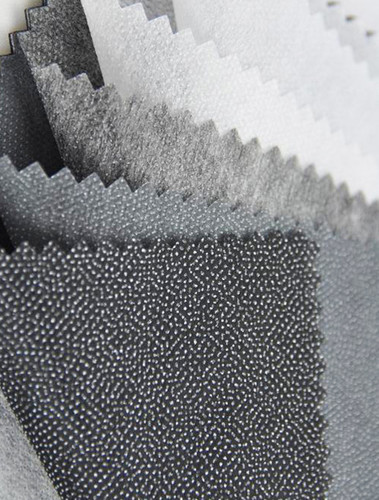Demystifying GRS Recycled Interlining Fabric
GRS Recycled Interlining is a specialized backing material used in garments to provide structure, shape, and support, which is certified by the Global Recycled Standard. This certification is crucial as it verifies that the interlining fabric contains a specific, traceable percentage of recycled post-consumer or post-industrial materials. The standard not only tracks the recycled raw materials but also oversees the entire chain of custody, from the source to the final product, ensuring that social and environmental best practices are followed during production. This means that when a manufacturer uses GRS-certified interlining, they are incorporating a component that contributes directly to a circular economy by reducing waste and the consumption of virgin resources. The integrity of the claim is backed by third-party verification, giving brands and consumers confidence in the product's sustainable credentials.
The Compelling Benefits of Using GRS Certified Interlining
Incorporating GRS certified interlining into garment manufacturing offers a multitude of advantages that extend beyond basic functionality. From an environmental perspective, it significantly lowers the carbon footprint and water usage associated with producing new, virgin materials, thereby conserving natural resources and diverting waste from landfills. For brands, this certification serves as a powerful tool for marketing and storytelling, allowing them to transparently communicate their commitment to sustainability to an increasingly eco-conscious consumer base. Furthermore, using GRS materials can help companies meet internal corporate social responsibility goals and comply with tightening environmental regulations in various markets. The certification also encourages better chemical management throughout the production process, ensuring that harmful substances are restricted, which leads to a safer product and a reduced environmental impact.
GRS Recycled Interlining Versus Traditional Interlining
The primary distinction between GRS recycled interlining and its traditional counterpart lies in the raw material source and the verified accountability of its production. Traditional interlining is typically manufactured from virgin synthetic fibers or cotton, which relies entirely on new resource extraction, resulting in a higher environmental burden regarding energy and water consumption. In contrast, GRS interlining is produced from recycled content, such as plastic bottles or textile waste, which undergoes a process of recycling before being spun into new fibers for the interlining substrate. While the performance, durability, and fusibility of GRS interlining are designed to meet the same technical standards as traditional options, the GRS version provides an independently verified chain of custody. This traceability is absent in conventional interlining, making it impossible to substantiate any environmental claims without the rigorous GRS certification framework.
Diverse Applications of GRS Recycled Interlining in Modern Garments
The versatility of GRS recycled interlining allows it to be seamlessly integrated into a wide array of garment types, providing structure and sustainability across multiple product categories. In formal wear, such as suits and blazers, it is used in collars, lapels, and chest pieces to maintain a sharp and defined silhouette that retains its shape over time. For outerwear like jackets and coats, this interlining adds necessary body and warmth without compromising on the eco-friendly ethos of the garment. It also plays a critical role in dress shirts, where it is found in cuffs and collars to ensure they remain stiff and crisp through multiple wears and washes. Even in accessories and bags, GRS recycled interlining is employed to add stability and form, demonstrating that sustainable material choices can be applied to nearly every component of the fashion and textile industry.
A Practical Guide to Sourcing Reliable GRS Certified Recycled Interlining
Sourcing genuine GRS certified recycled interlining requires a diligent and informed approach to ensure the integrity of your supply chain. The first and most critical step is to request and verify the supplier's official GRS transaction certificate, which acts as proof of certification and details the recycled content percentage for the specific material you are purchasing. It is essential to engage in thorough communication with potential suppliers, asking direct questions about their manufacturing processes, the origin of their recycled materials, and their commitment to the social and environmental criteria mandated by the standard. Building a strong, transparent relationship with your interlining supplier is key to a successful and authentic sustainable sourcing strategy. Additionally, consider conducting audits or site visits to their production facilities to witness their operations firsthand, ensuring that their practices align with your brand’s values and the stringent requirements of the Global Recycled Standard.


 English
English Español
Español Türk
Türk 简体中文
简体中文









